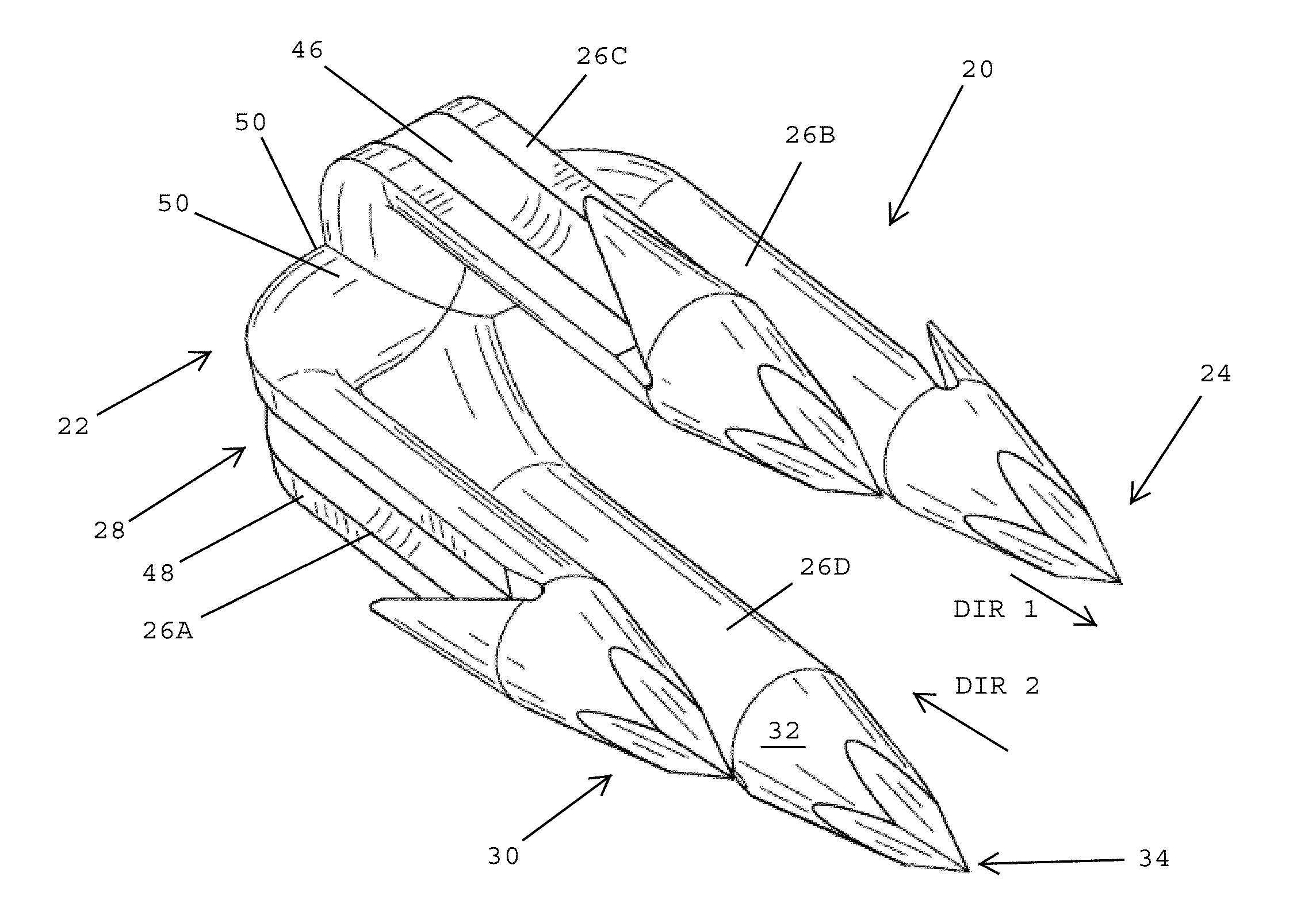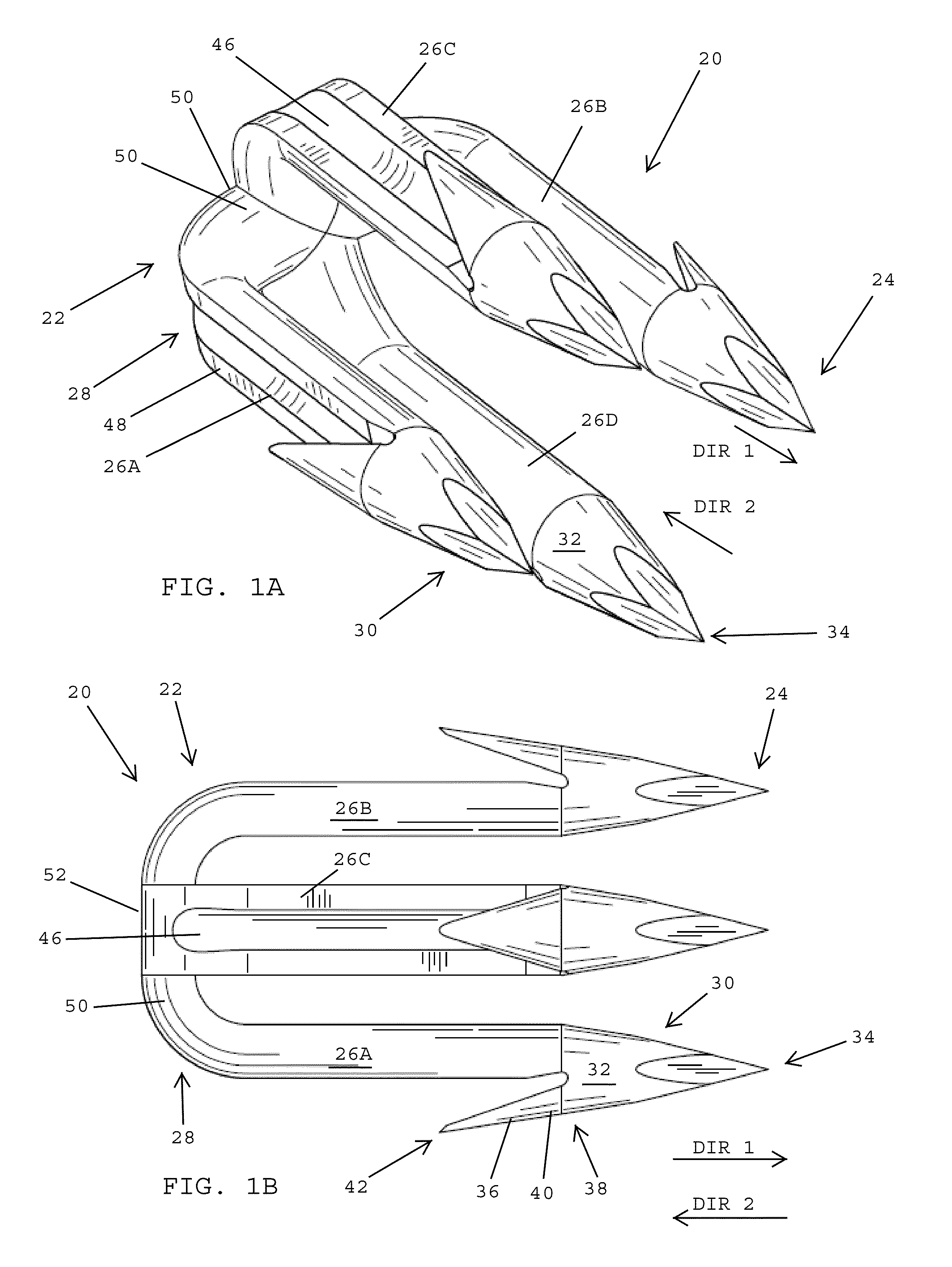Absorbable surgical fasteners for securing prosthetic devices to tissue
a surgical fastener and prosthetic device technology, applied in the field of surgical fasteners, can solve the problems of reducing lifting ability, bowel impaction, and not being able to suture, and achieve the effects of improving the ability of surgical fasteners to penetrate, improving holding force, and strong, yet shorter tip design
- Summary
- Abstract
- Description
- Claims
- Application Information
AI Technical Summary
Benefits of technology
Problems solved by technology
Method used
Image
Examples
Embodiment Construction
[0056]Referring to FIGS. 1A and 1B, in one embodiment, a surgical fastener 20 for securing a medical device such as surgical mesh to tissue preferably includes a proximal end 22 and a distal end 24. The surgical fastener 20 is preferably absorbable. In one embodiment, the surgical fastener 20 preferably has four legs including first and second legs 26A, 26B that lie in a first plane and third and fourth legs 26C, 26D that lie in a second plane that is orthogonal to the first plane. In one embodiment, the first and second planes define an angle relative to one another. In one embodiment, the angle is about 90 degrees.
[0057]In one embodiment, each of the four legs 26A-26D has the same length, dimensions and structure. In one embodiment, each leg 26A-26D preferably has a proximal end 28 adjacent the proximal end 22 of the surgical fastener 20, and a distal end 30 adjacent the distal end 24 of the surgical fastener 20. The distal end 30 of each leg 26A-26D desirably includes an insertio...
PUM
 Login to View More
Login to View More Abstract
Description
Claims
Application Information
 Login to View More
Login to View More - R&D
- Intellectual Property
- Life Sciences
- Materials
- Tech Scout
- Unparalleled Data Quality
- Higher Quality Content
- 60% Fewer Hallucinations
Browse by: Latest US Patents, China's latest patents, Technical Efficacy Thesaurus, Application Domain, Technology Topic, Popular Technical Reports.
© 2025 PatSnap. All rights reserved.Legal|Privacy policy|Modern Slavery Act Transparency Statement|Sitemap|About US| Contact US: help@patsnap.com



